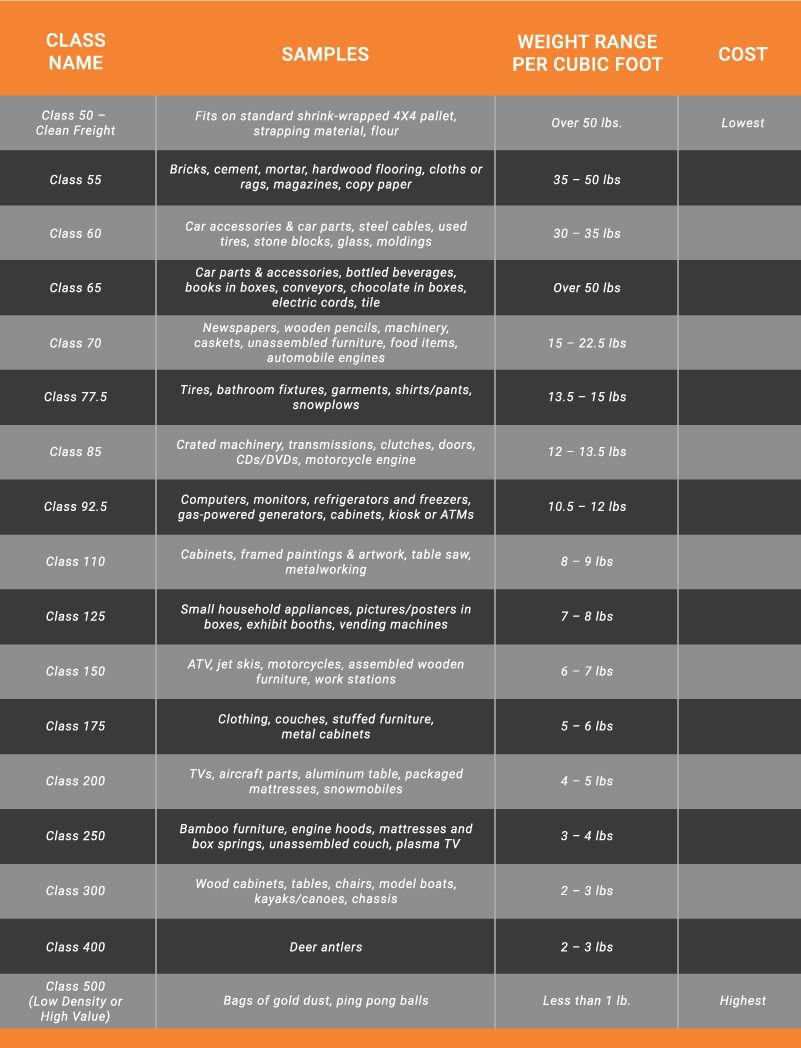When shipments are too large for parcel, but too small to fill an entire truck, shipping LTL (Less-Than-truckload) is often the best option. Though there are multiple benefits of shipping LTL, engaging your LTL carriers, and understanding the tariff process can make it difficult to get started without using a 3PL. In order to get the best value for your LTL shipping dollar, it’s essential to understand the LTL rate structure and to take the steps needed to create a cost-effective shipping process.
In this article, we’ll provide five strategies to help you reduce your LTL shipping costs and run a more efficient operation.
Choose the Right LTL Carriers for Your freight
Determining which LTL carriers best fit your shipping needs is the first step to reducing your freight spend. Since most carriers specialize in different regions, rates will vary depending on the lanes you’re shipping. Working with the carriers that provide competitive pricing on the lanes you commonly book is always a fiscally smart choice. You're more likely to receive better rates when working with a carrier that can move your freight efficiently within their network.
Another factor to consider when choosing a carrier is how you can communicate with them. Many carriers have the ability to connect via an API (Application Programming Interface) connection. An API connection enables shippers to easily share essential shipment information back and forth with their carriers. Being able to share this information leads to streamlined pickups, reducing business risk, and securing capacity.
Last, but not least, selecting carriers that have a high percentage of On-time Delivery (OTD) and high percentage claim-free deliveries not only increases the chances of happy customers, but decreases unnecessary operational costs. Though integrated cargo insurance can eliminate annoying claim processes and provide quick payouts for the full value of your shipment, it’s best to reduce the probability of damage whenever possible.
Pack for Maximum Density
LTL rates are determined by three criteria: weight, distance, and freight class. Freight class is based on density, handling, stowability, and liability. Density, which is one of the most important factors when determing freight class, is calculated by dividing the total weight of your shipment by the volume (length X width X height). The higher the density (pounds per cubic foot), the lower the shipping cost per pound. Simply put, it’s going to cost a lot more to ship 100 pounds of feather pillows than 100 pounds of bricks.
When you ship LTL, the class you select helps carriers determine the space you are going to utilize in conjunction with the weight. The more room your shipments take up in the truck, the higher your rate will be. This means that it pays to pack efficiently. Minimizing the total volume of your load by packing your pallets and crates tightly and securely is critical for cost savings. A volume that’s too light or too large will lose priority over average shipments weighing from 1,000 to 2,000 pounds.
Keep in mind that packaging costs are minimal compared to overall transportation costs. It often makes sense to invest more in your packaging efforts by using smaller, but sturdier cartons or utilizing a pricier void fill option that provides equal shock protection with less volume. If your goods are fragile and require custom packaging and bracing materials, it’s smart not to skimp on quality packaging materials. Quality packaging that allows you to pack more products into less space will more than pay for itself when you are negotiating with your LTL carriers.
See our freight class table below:

Ship on Lower-Traffic Days
Airline passengers who are looking for discounts often book Wednesday flights, when demand and prices are lower. Like the airline industry, LTL carriers have specific days that typically present lower demand. Mondays and Fridays are often the least expensive days to ship LTL freight, but this can vary by carrier. If you’re not sure which days are low traffic for your carrier, simply reach out to your carrier and ask. Shipping on low-demand days not only reduces your freight spend, but can also benefit your carrier by filling up the empty truck space.
Because of the tight capacity LTL market, low demand days are not as common as they once were. For many shippers, finding capacity can be a struggle every day of the week. That’s why it’s beneficial for shippers to provide early, accurate data that aligns with their carriers’ digital strategy. Having a direct digital connection drives efficient communication with your carrier that helps secure capacity and optimizes overall operations.
Integrate with Your Carriers Via API for Quoting, Dispatching, and Tracking
More and more, carriers are giving higher priority to shippers they can connect with via API. API integration serves as a digital bridge between the shipper and carrier, benefiting both parties. Unfortunately, most 3PLs utilize an EDI (Electronic Data Interchange) connection, rather than an API. Info shared via EDI is processed in batches whereas API data happens in real time. When tracking shipments, real-time data is more accurate and, therefore, more useful for both the shipper and the carrier. An API connection is superior to EDI not only for tracking shipments, but for getting faster, more reliable quotes.
One of the biggest benefits of utilizing an API is a speedier, more efficient dispatch process. API dispatch is transmitted in real-time with confirmation of success or failure, unlike EDI delivered in batches with no confirmation.
A SaaS shipping management platform provides shippers with an API connection that serves as a digital bridge between themselves and their carriers, delivering all the efficiencies mentioned above and more.
Avoid Unexpected Accessorials
While freight accessorials are fairly common in the LTL shipping industry, they can be a logistical nightmare for shippers. This happens when preventative measures aren’t taken and they aren’t properly planned for. Unexpected accessorials can affect your bottom and can even threaten your status as a shipper of choice.
The following are common freight accessorials:
Freight accessorials often fly under the radar because they can apply to multiple aspects of the shipment. Many accessorials, which are usually identified on the shipper’s BOL (Bill of Lading) are unavoidable and simply an expected part of the process. Others, however, are preventable and can be prevented by:
-
Educating yourself and other employees about your carriers’ guidelines
-
Avoiding weight, dimension, and oversize adjustments
-
Ensuring your BOL is accurate
Watch the short video below to find out more about preventing unexpected accessorials:
Use a Powerful TMS
Without full visibility of your freight spend, controlling your shipping costs just isn’t feasible. A TMS with advanced data and analytics allows shippers to make informed decisions with comprehensive reporting across all their carriers. This data, which includes average transit time, cost per carrier, market share, average weight, etc. provides organizations with the insights needed to adjust pricing as needed, negotiate carrier rates, and optimize operations.
Another way that a TMS can reduce LTL costs is via comprehensive shipping management tools that increase efficiency. Redundant, manual, and error-prone processes can lead to substantial profit leaks. Some of these outdated, time-wasting processes include visiting several carrier websites to quote and track your shipments, handwriting bill of ladings and other essential documents, dealing with invoice unknowns, etc. Replacing these processes with more efficient automation eliminates common shipper pain points and creates a cost-effective end-to-end shipping process.
Insights
MyCarrierTMS reduces shipping costs by an average of 15% and decreases human error by an average of 63%. With numbers like these, it’s not surprising that over 72% of shippers using MyCarrierTMS say it’s essential for running their business. The top-rated shipping management platform provides the visibility and efficiency needed to reduce your LTL freight shipping costs. To find out how much time and money you can save on your shipping process, visit our ROI calculator page.


